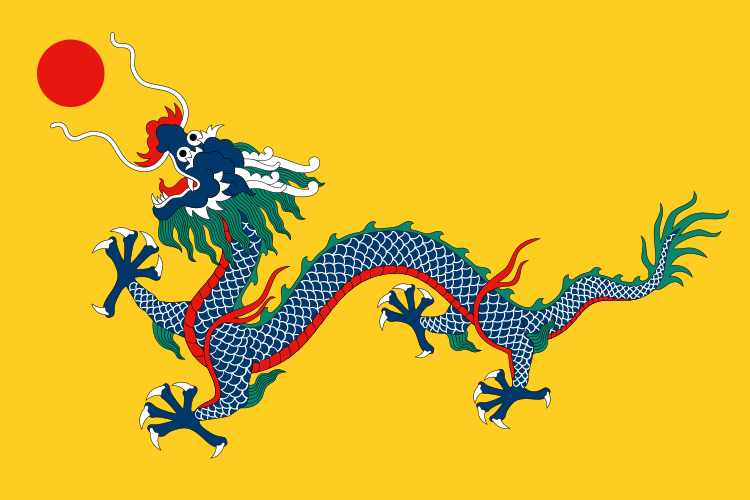 Flag of the Chinese Empire under the Qing dynasty (1889-1912), details per the restoration of Beiyang fleet researcher, 2 May 2015, Original work: 1889. Own work. [Public domain in US, not everywhere] Puyi (Chinese: 溥儀; February 7, 1906 – October 17, 1967), courtesy name Yaozhi (曜之), was the last emperor of China as the eleventh and final Qing dynasty monarch. He became Qing emperor at the age of two in 1908, but was forced to abdicate on February 12, 1912, during the Xinhai Revolution. His era name as Qing emperor, “Xuantong” (Hsuan-tung), means “proclamation of unity”. He was later installed as the ruler of the Japanese puppet state of Manchukuo during World War II. He was briefly restored to the throne as Qing emperor by the loyalist General Zhang Xun from July 1 to July 12, 1917. He was first wed to Empress Wanrong in 1922 in an arranged marriage. In 1924, he was expelled from the palace and found refuge in Tianjin, where he began to court both the warlords fighting for hegemony over China and the Japanese who had long desired control of China. In 1932, after the Japanese invasion of Manchuria, the puppet state of Manchukuo was established by Japan, and he was chosen to become the chief executive of the new state using the era name of “Datong” (Ta-tung).
2 Comments
Josef Ketzer
3/31/2022 03:16:38 am
A great movie 🎦 by Bertolucci, although he was a Commie, which comes out especially clearly in his "1900". But for me this area ("Manchukuo", now the Dongbei <Northeast>) is especially in because my wife is from this part of the world. Family lore even goes that my mother in law as a small girl narrowly escaped being captured by the Japanese for serving as a guinea pig for cruel medical experiments...
Reply
3/31/2022 03:27:13 am
Thanks, Joe, for the info on your wife and on Bertolucci. I didn't know his leanings. Bobby
Reply
Leave a Reply. |
Categories
All
Archives
July 2024
|
 RSS Feed
RSS Feed